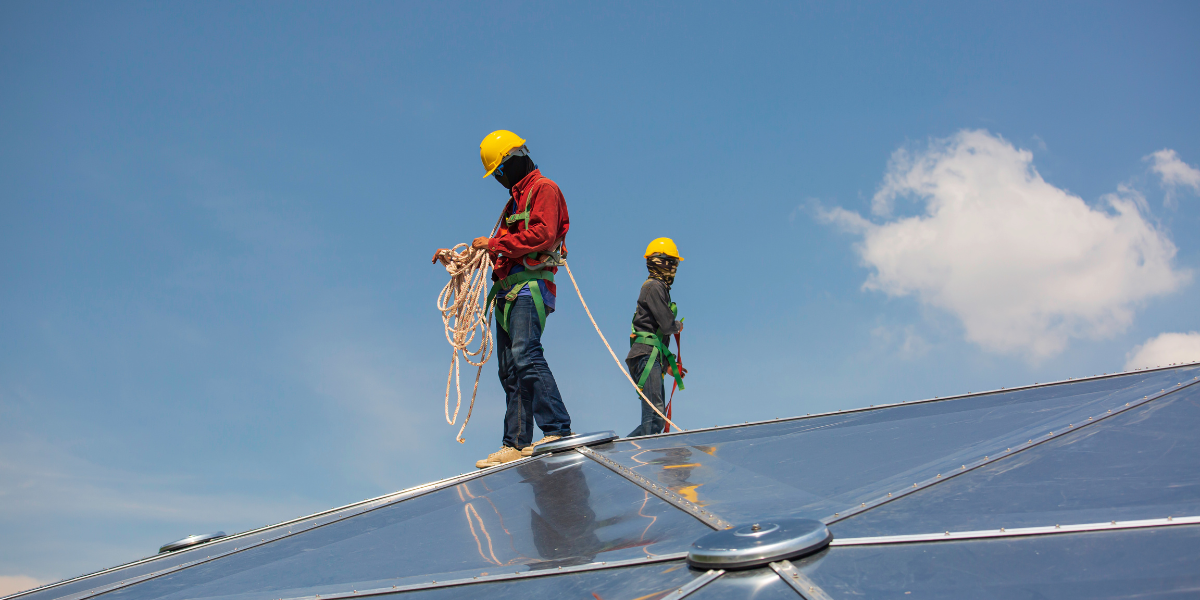2 min read
The Critical Importance of Tank Top Safety
Concord Tank Corporation
Oct 25, 2023 12:09:00 PM

Working atop towering 48-foot tall tanks is a challenging and potentially perilous task. Every step you take on the roof demands careful consideration of safety. In this blog post, we'll delve into the significance of maintaining safety when working at great heights and provide essential guidelines to ensure your well-being.
The Gravity of the Situation
Imagine this scenario: you're atop a 48-foot tall tank, and, for some reason, you slip or fall without a properly secured safety harness. In less than two seconds, you'll find yourself hurtling toward the ground at a staggering speed of approximately 38 miles per hour. Once you reach that point, there's very little anyone can do to prevent a catastrophic outcome.
That's why it's crucial to rewind to the moment you step onto the tank's roof and prioritize your safety from the start.
The Key to Safety: Proper Setup and Hazard Identification
Above all else, ensuring your safety while working on top of a tank hinges on meticulous preparation. Before you commence your work, take the time to establish a secure work area and meticulously identify potential hazards.
Here's a quick checklist to guide you when setting up for rooftop work, whether it's a routine task or just a "quick measurement":
- Handrails and Guardrails: Is the area where you're working protected by handrails or guardrails to prevent accidental falls?
- Tie-off Points: Are there designated tie-off points on the roof, and are they safe for use?
- Safety Equipment Inspection: Have you thoroughly inspected your tie-off ropes, harnesses, and lanyards to ensure they are in good condition and meet OSHA and ANSI requirements?
- Tie-off Rope Length: Is your tie-off rope an appropriate length? Will it catch you immediately if you step over the edge, or does it risk dropping six feet first?
- Distance from the Edge: How far are you from the edge of the tank while working? Is it a safe distance?
Debunking the "6-Foot Rule" Myth
A common misconception in rooftop work is the belief that as long as you maintain a 6-foot distance from the edge, you can work without fall protection. However, this is a dangerous myth.
According to OSHA code the 6’ rule only applies when using warning lines along with other safety precautions for leading edge work (See OSHA interpretation below). If the conditions are safe, you are allowed to walk from the access point on a roof directly to the center of the tank to set up your fall restraint system.
“As discussed in the Preamble to Part 1926 Subpart M (Volume 59 of the Federal Register, page 40683), OSHA determined in the rulemaking that there is no safe distance from an unprotected side or edge of a walking/working surface that would render protection unnecessary.” – Standards Interpretations
Conclusion
Safety when working on 48-foot tall tanks, or any elevated surface for that matter, is non-negotiable. Statistics show that falls from height are a significant cause of workplace fatalities. Your life and well-being depend on meticulous planning, proper equipment, and adherence to safety guidelines.
Remember that there is no "safe distance" from an unprotected edge, and the consequences of neglecting safety measures can be catastrophic. Let's prioritize safety at all times. Your life is worth it.
ABOUT CONCORD TANK
Concord Tank Corporation specializes in tank repairs and terminal maintenance. We help simplify and expedite your projects without sacrificing safety and quality. From initial decommissioning through to the final return to service, our experienced team can take care of your tank project needs. Our services include API 653 tank repairs, in-service leg pinning, terminal maintenance projects, storage tank cleaning, floating roof seal repairs, aluminum IFR installation, and more.


